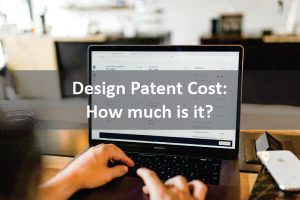A drawing that easily conveys the required information about an invention visually is called a quality patent drawing. However, you must follow the patent illustrations rules to get a good patent drawing.
Patent illustrations rules are the requirements that are set by the USPTO for drawings, photographs, diagrams, and flowsheets that you must submit during the patent application process. An Inventor must follow the set rules properly for an invention to qualify for a patent without any question. Moreover, an impressive patent drawing helps in capturing a filing date and for an impressive patent drawing, you need a qualified patent illustrator.
Related Article: Unusual Patents You Never Have Thought Of
Patent illustrations Rules: Points to consider
You must follow some set of rules or guidelines provided by the patent offices in order to prepare a good patent drawing. Also, this helps you to save time, money and extra efforts. Some of the patent illustrations rules that you must consider are as follows:
- Black and White drawings:
The patent office generally demands black and white drawings. You must use India ink, or equivalent to secure black lines for drawings.
- Color drawings:
You must use the color drawings on rare occasions. They must have ample quality so that one can print every detail of the color drawing in black and white format. However, color drawings are prohibited in international applications according to PCT 11.13.
The Patent Office may accept color drawings only after the grant of a petition that explains the significance of the color drawings. The inventor must file the petition.
The petition includes:
- Petition Filing fee.
- A black and white photocopy of the color drawing with similar details and 3 sets of color drawings.
- You must amend the specification in order to insert the following paragraph at first in the drawing description: The patent or application file contains at least one drawing executed in color. Copies of this patent or patent application publication with color drawing(s) will be provided by the Office upon request and payment of the necessary fee.
- Black and White Photographs:
The Patent Office accepts the photographs if they are the only possible medium for illustrating the invention. For example, cell structure, chemical structures, beauty products, etc.
Also, they must have adequate quality so that one can print every detail of the photograph in black and white format.
- Colored Photographs:
A Color photograph is accepted only if you satisfy the conditions for the acceptance of black and white photographs and color drawings.
- Drawing identifications:
A Drawing Identification must include:
- Title of the invention.
- Name of the Inventor.
- Application number/Docket number.
You must place this information on the front page and align it to the center with the top margin.
- Paper type:
You must choose a drawing paper that is flexible, durable, white, non-shiny and smooth. Refrain using sheets with folds and creases. Also, you must only use a single side of the sheet. Try to avoid erasure marks, overwriting and alterations.
- Size of the Sheet:
Every drawing sheet must own a similar size. You must stick to the following dimensions:
- 21.0 * 29.7 cm
- 21.6 * 27.9 cm
- Margins:
Every sheet must follow the following margin scale:
- The top margin of 2.5 cm.
- Left side margin of 2.5 cm.
- Right side margin of 1.5 cm.
- The bottom margin of 1.0 cm
Types of Views
A drawing must contain every possible view of the invention i.e. top view, Bottom view, Side view, Front view, Back view, etc. Also, you must arrange all the views together on the sheet. Also, avoid wasting sheets, keep the position, maintain the proper gap between the views.
NOTE: Do not use similar sheets for views and claims.
Click Here to Download (Free Samples)
Some other general types of views are:
Exploded Views:
It shows the working, order or relationship of an assembly of different parts. You must place an exploded view within the brackets.
Related Article: Significance of Patent Proofreading
Partial Views:
You may break the view of a large device or machine into partial views. You must include a view of the comparatively small scale that shows the positioning of all the partial views.
Sectional Views:
A sectional view is used to show a hidden area or part of an object by cutting/removing some of the parts of that object. The cutting line is termed as cutting plane.
- Scale:
You must create a drawing with a scale that shows the mechanism of the invention without crowding. Also, you cannot use indications like actual size or scale 1/2 on the drawings.
Shading Requirements:
Shading indicates the surface conditions or shape of any object. Spaced lines are preferred for shading. They must be thin, few in number and must contrast with the rest of the drawing.
Moreover, you must assume the Light coming from the upper left corner at an angle of 45° for shading. Pitch black shading is prohibited. However, you may represent bar graphs with them.
- Symbols/Graphics:
You may use Graphical drawing symbols for conventional elements. You must use symbols to illustrate devices that own a conventional meaning around the world and acceptance in the art.
- References:
- You must keep the reference characters such as sheet or view numbers legible and avoid using brackets or inverted commas.
- Orient them in the direction of the view.
- Use the English alphabets for letters. However, you may depict wavelengths, angles, and formulas with other kinds of alphabets.
- You must keep the size of Numbers and letters to 0.32 cm in height. Place them at a clean surface and avoid placing them over figures and shades.
- Lead Lines:
Lead lines connect the reference characters and referred details. You must keep them as short as possible. Lead lines may be straight or curved. Moreover, they must not overlap with each other.
- Arrows:
You may use the arrow at the end of the line to indicate the following:
- At the tip of the lead line to indicate the entire section in the direction of the arrow.
- Indicating the direction of movement.
- Copyright/Mask Work Notice:
Place a copyright/mask work just below the relevant figure and keep the size of the letters from 32 to 64 cm. Also, limit the contents of the notice as per the law.
Moreover, you must stick to the authorized language to gain a permit for the copyright/mask work notice.
Some important tips:
- Number different views and sheets of the drawing with Arabic numerals.
- Place authorized security markings on the top of the page, centered at the top margin.
- Submit durable and permanent correction to the Office.
- Avoid holes in the drawing sheets.
Why choose the Patent Illustration Express?
Our team at the Patent illustration express comprises of experts and professionals of the field. As soon as you place the orders, they start working with all their efforts and the latest software. Our team remains updated with the current rules about the patent illustration and provides you 100% satisfaction. We serve you the most pertinent outcome and that too in a very reasonable price. Also, we work within a quick turnaround time with long-lasting results. Moreover, the outputs you receive are in flexible formats. To get to know more about our services, please visit the Patent Illustration Express.
Other Related Articles:
Patent a Process in the US: A Complete Guide


